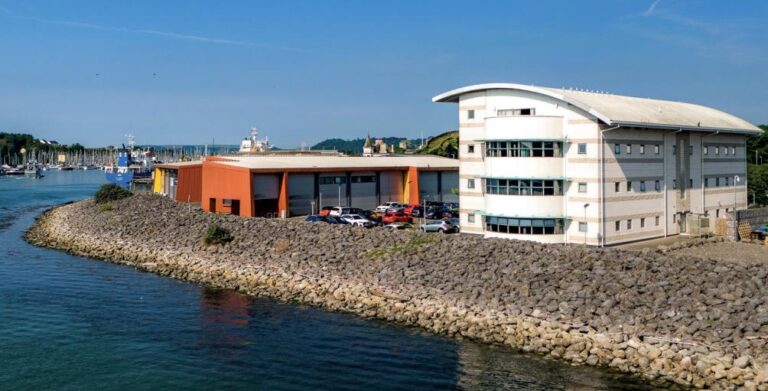As part of its commitment to “rebalance” the system, the government has announced a new business rates package for England from 1 April 2026. It combines permanently lower tax rates for retail, hospitality and leisure (RHL), a new higher rate for the most valuable properties, fresh transitional protections, and targeted support for small businesses. Below is a clear summary of what’s changing and how it may affect you.
Headline changes at a glance
- Revaluation from 1 April 2026 resets rateable values to reflect market changes since 2023.
- National multipliers fall for all: small business to 43.2p; standard to 48.0p.
- Permanently lower RHL multipliers (for eligible RVs below £500,000) will be 5p below the national rates: small business RHL 38.2p; standard RHL 43.0p.
- New high-value multiplier for RVs £500,000 and above set 2.8p above the national standard: 50.8p.
- Transitional Relief worth £3.2bn over three years with capped annual increases; plus a one‑year 1p supplement for those not receiving TR or Supporting Small Business (SSBS).
- Expanded SSBS to cushion those losing SBRR/rural rate relief and those losing RHL relief (additional £1.3bn support).
- Over half of ratepayers are expected to see no bill increase; around 23% should see bills fall.
- Film studios: 40% gross bill reduction continues to 2034.
- SBRR grace period extended to three years when expanding into a second property.
- Call for Evidence on business rates and investment, including Receipts & Expenditure valuation.
- Business Rates Retention (BRR): existing 100% pilot in Cornwall and West of England extended to 2028-2029.
2026–27 multipliers (England)
| Category | 2026–27 multiplier |
| Small business (national) | 43.2p |
| Standard (national) | 48.0p |
| High-value (RV ≥ £500,000) | 50.8p |
| Small business RHL (eligible RV < £500,000) | 38.2p |
| Standard RHL (eligible RV < £500,000) | 43.0p |
Business rates Transitional Relief
To support ratepayers facing large bill increases at the revaluation the government is introducing a redesigned Transitional Relief scheme worth £3.2 billion over the next three years, providing more generous support for those paying higher tax rates. The Transitional Relief caps will be as follows for properties with a rateable value of:
- Up to £20,000: in 2026-27 – 5%, in 2027-28 – 10% (plus inflation), in 2028-29 – 25% (plus inflation).
- £20,001 to £100,000: in 2026-27 – 15%, in 2027-28 – 25% (plus inflation), in 2028-29 – 40% (plus inflation).
- Over £100,000: in 2026-27 – 30%, in 2027-28 – 25% (plus inflation), in 2028-29 – 25% (plus inflation).
Business rates Transitional Relief Supplement
The government is introducing a 1p supplement to the relevant tax rate for ratepayers who do not receive Transitional Relief or the Supporting Small Business scheme to partially fund Transitional Relief. This will apply for one year from 1 April 2026.
Supporting Small Business (SSBS)
- For those losing some/all Small Business Rates Relief or rural rate relief: annual bill increases capped at the higher of £800 or the transitional relief cap, from 1 April 2026.
- SSBS expanded to ratepayers losing RHL relief: additional support worth £1.3bn over three years from 1 April 2026.
- 2023 SSBS extended for one year in 2026–27 to protect the smallest businesses from sharp bill increases.
- Support is applied before changes in other reliefs and local supplements.
RHL rebalancing
- Permanently lower multipliers for eligible RHL properties (RV below £500,000) from April 2026, set 5p below national equivalents.
- Over 750,000 RHL properties will benefit; small and standard RHL rates will be the lowest since 1990–91 and 2010–11 respectively.
- Aim: sustain the high street by locking in lower tax rates for shops, pubs and other RHL premises.
High-value properties
- New high-value multiplier of 50.8p for RVs of £500,000 and above (around 1% of properties).
- Set at 2.8p above the standard national rate (well below the 10p legislative ceiling), recognising the role of major assets in growth.
Business Rates Rebalance 2026:
What this means for South-West occupiers
- RHL operators with RVs under £500,000: expect lower business rates from April 2026. If you currently receive RHL relief that falls away at revaluation, the expanded SSBS offers a three‑year cushion.
- High‑value assets (RVs £500,000+): factor in the 50.8p multiplier from 2026-27. Transitional caps may moderate year‑one increases, but budget for the one‑year 1p supplement if you are not eligible for TR/SSBS.
- Small businesses growing into a second site: the three‑year SBRR grace period supports scaling without losing relief immediately.
- Nationally, over half of ratepayers are expected to see no bill increase, and around 23% to see bills fall. Local impacts in the South-West will vary by location and sector.
Practical next steps
- Model 2026-27 bills: apply draft 2026 list RVs to the new multipliers, then layer in TR/SSBS and any local supplements or BIDs.
- Map eligibility: confirm RHL status, SBRR/rural relief, and whether you fall into “high‑value”.
- Plan for the supplement: if you won’t receive TR/SSBS, include the one‑year 1p supplement in 2026–27 forecasts.
- Portfolio strategy: consider timing of expansions to benefit from the three‑year SBRR grace period.
- Engage early on valuation: check your draft RVs and prepare evidence in case a Check/Challenge is appropriate.
- Contribute to policy: if Receipts & Expenditure affects your investments, consider responding to the Call for Evidence.
Vickery Holman are on hand to help with any queries you may have regarding the Budget or the draft 2026 rateable values which are now live. Please get in touch at – [email protected]




